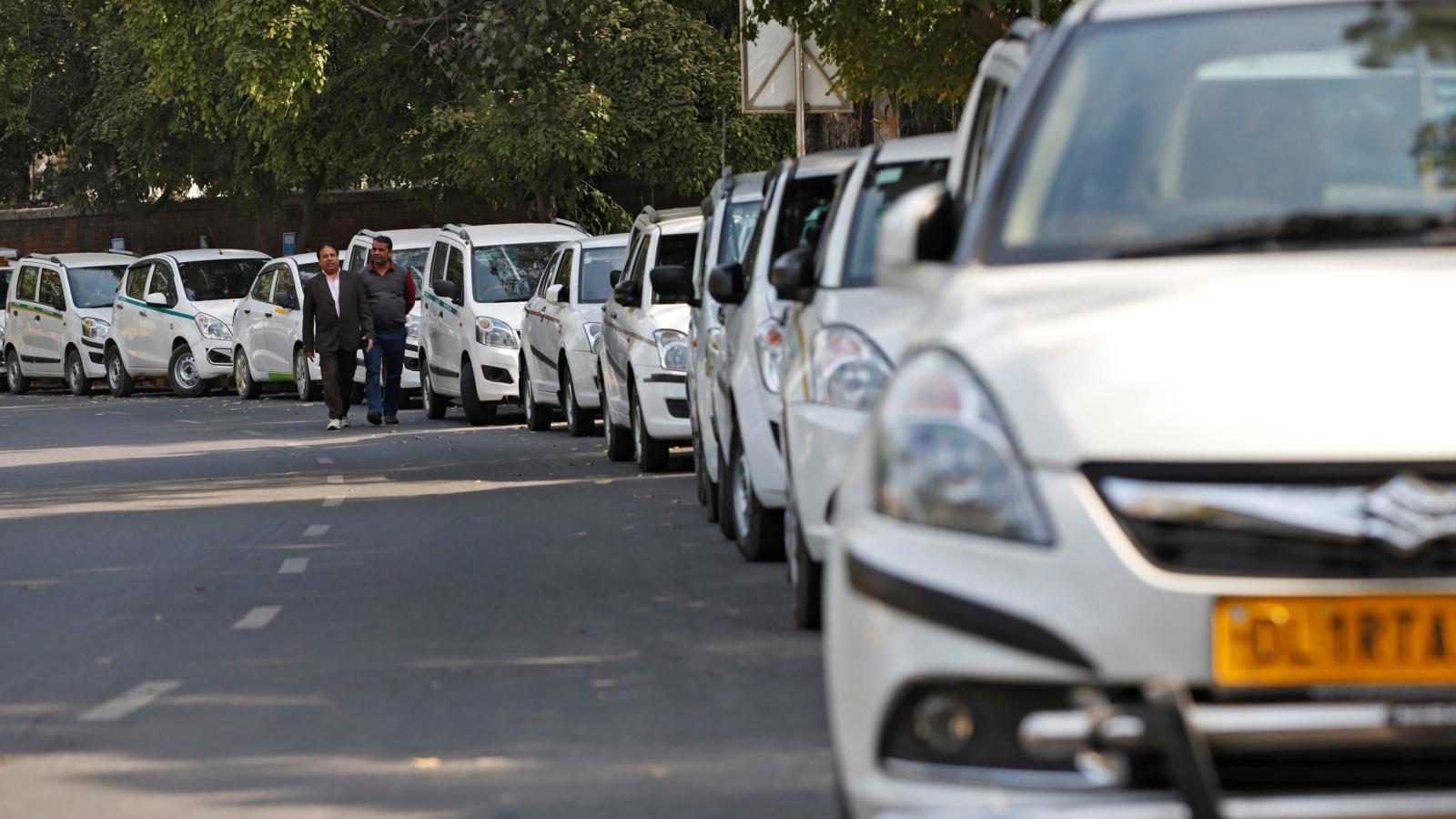
As more businesses reopen and people emerge from their homes with greater frequency, there’s a sense that things are getting back to “normal.” Many folks are easing into activities from their pre-pandemic lives, like dining at a restaurant, booking air travel and even taking an Uber.
But are rideshare services like Uber and Lyft ― or even traditional taxis ― safe for passengers amid the COVID-19 pandemic?
“Although it doesn’t feel as scary as it used to be, we are nowhere near the end of this pandemic,” said Kit Delgado, an assistant professor or emergency medicine and epidemiology at the University of Pennsylvania. “As of today we are still identifying more than 20,000 new cases of COVID-19 per day throughout the U.S.”
Indeed, hundreds of Americans are still dying from the disease each day, with per-day death counts even rising above 1,000 as recently as early June. The risk is also not spread evenly, as transmission rates and new cases show increases and decreases in different states.
So if you’re considering using a taxi or rideshare service in these times, there are important factors to keep in mind and ways to mitigate the risks involved. Below, Delgado and other health experts share their guidance for safe Uber and taxi rides right now.
Know the risks involved.
It’s helpful to look at various modes of transportation along a spectrum of risk ranging from the least to most risky.
“I would say the safest mode of transportation at this time would be taking your own personal car by yourself since in this situation you would not be exposing yourself to anyone else,” said Krutika Kuppalli, an infectious diseases physician and biosecurity fellow at the Johns Hopkins Center for Health Security. “The next best situation would be to have someone you know (that might be in your social bubble) drive you since you would be in regular contact with them. I would say the next safest scenario would be to take a taxi, Uber or Lyft.”
Delgado told HuffPost that while there are no scientific studies quantifying the risk of getting COVID-19 specifically from using a rideshare or taxi, evidence from other settings and on local transmission activity can provide guidance.
“First, we know that the virus is primarily transmitted by respiratory droplets between persons in close proximity (e.g., less than 6 feet away) with higher risks in closed spaces sustained exposure (more than 10-15 minutes),” he explained. “Therefore, using a rideshare or taxi can be moderate to high-risk venues for exposure if someone with coronavirus is in or has recently been in the vehicle.”
To reduce risks, ridesharing companies like Uber and Lyft now require drivers and passengers to wear face coverings. Both companies have also announced efforts to send cleaning supplies to drivers.
“However, cleaning and sanitizing the vehicle is the individual responsibility of the driver and remains unclear how well this being done,” Delgado said. “Also, it is the individual responsibility of rideshare drivers to self-quarantine and not drive if they develop symptoms and they may face tough choices when self-quarantine means forgoing income.”
Ask yourself whether it’s necessary.
“Decide if the trip is really necessary and worth the potential risk of coronavirus exposure, particularly in medium-to-high risk counties with ongoing transmission,” said Delgado. “For example, if you have an essential health care appointment or procedure, and rideshare or taxi is the only feasible way to go, take the rideshare or taxi. The consequences of forgoing necessary medical care are likely to outweigh the individual risk of coronavirus exposure.”
You should also consider whether you have safer options for transportation, like driving yourself (unless you’ve been drinking of course) or asking someone in your circle to drive you.
“Consider whether it’s necessary to travel locally and any alternative options, particularly physically active ones such as walking or riding a bike if feasible,” said Sachin Nagrani, a physician and medical director for the telemedicine and house call provider Heal.
Consider your location.
“The rate of new COVID-19 cases in your area may affect the risk of going into public for any activity, including using a taxi or rideshare,” Nagrani noted.
Delgado echoed this sentiment, suggesting that people research local coronavirus activity where they live. He recommended the University of Chicago’s interactive map, which shows daily new confirmed COVID-19 case counts by county.
“I would consider counties with zero new cases as lower risk, those with under 10-20 new cases per day as medium risk, and those with more than that as higher risk with lots of new cases per day,” he said. “For example, Phoenix, Arizona, is seeing around 800 new cases per day right now, which is concerning.”
Assess your own health.
As with other activities outside the home, your own health status should be a major factor in deciding whether or not to take a taxi or Uber/Lyft.
“Ask what are my health risk factors,” said Kuppalli. “The factors that affect safety would be if you have comorbidities, duration of ride, if there are other people in the car, can I wear a mask, etc.”
You should also consider the health status of those in your household and whether your potential exposure could be putting them at risk of serious illness or hospitalization. And of course, you should not go out in public if you’re feeling sick because you could spread illness to those outside your home as well. Don’t operate under the assumption that you’re exempt from the guidelines in place to slow the spread of the coronavirus.
“It’s important to remember it’s not just the elderly dying,” Delgado said. “For every person who dies, there around four more who make it out alive, but only after one to two weeks in the hospital, and most of those who require hospitalization are under the age of 65. Hospitalizations are increasing in at least nine states indicating it’s not just due to increased testing.”
Compare taxi and rideshare options.
Overall, the risks involved in taking a taxi versus an Uber or Lyft are largely the same, though various companies may have different safety and sanitation policies in place.
“There may be some minor considerations,” Delgado said. “Some taxi companies may have plexiglass barriers between the front and back seat which can reduce exposures between the passengers and the driver. Also, taxis may have more standardized and closely monitored cleaning and sanitation practices.”
“On the other hand, rideshare customers may be able to provide real-time feedback to report drivers who may be displaying symptoms or who have cars that are not well-cleaned,” he continued. “It’s hard to know how this would balance out in terms of risks to customers.”
Wear a mask.
After assessing the risks involved, you may still decide to go forward with your taxi or rideshare journey. If so, it’s important to take steps to protect your health along the way.
“Riders should wear a face covering and request that the driver also wear a covering if he or she is not already doing so and report drivers who are failing to adhere to precautions,” Delgado noted.
In addition to face masks, eye protection can provide some extra protection. Nagrani also suggested sitting in the seat furthest from the driver.
“If you’re out to run necessary errands, try to consolidate them into one trip to limit your outings,” he added.
Avoid high-touch surfaces.
“It always safest to assume that any surface may be contaminated ― door handle, seat, etc.,” Delgado said. “Riders should clean their hands with hand sanitizer upon getting in the car and should not touch their eyes, face, or mouth when in the car so no eating or drinking. Consider wearing sunglasses or glasses as a physical reminder to avoid touching the eyes and for added protection against any droplets that could be in the air.”
Riders should also sanitize their hands or wash them with soap and water if possible after exiting the vehicle. It’s important to wipe down your phone and any belongings that were placed on surfaces in the car.
Open the windows.
“If the weather is nice, put down the window,” Kuppalli suggested. Doing so maximizes ventilation and helps prevent any potentially aerosolized respiratory droplets from hanging in the air for too long.
“This advice is based on the best evidence to prevent infections in high risk venues such as hospitals,” Delgado said. “In hospitals, the safest rooms are ones in which the air is sucked out of the room (negative pressure rooms). Therefore, I would recommend rolling down the windows if possible, or if not possible, asking to set the air to non-recirculating settings.”











